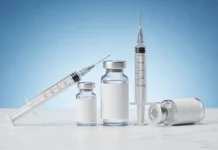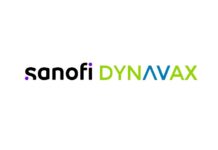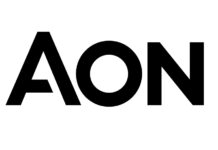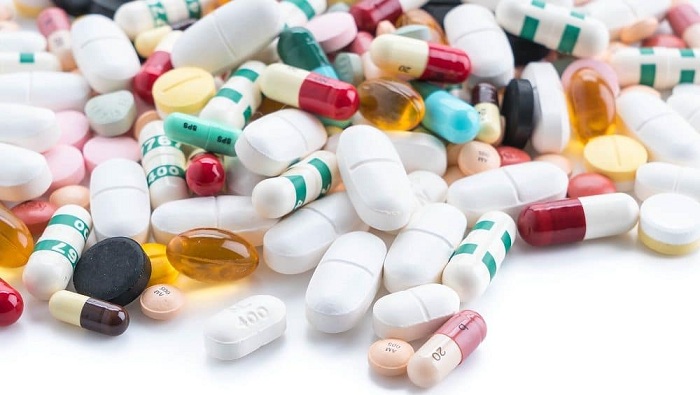Legislation is being put into place, but it is still essential that we all play a participative role in the continued fight to protect the patients that rely on our product.
Introduction
The issue of counterfeit pharmaceutical product is growing on a world-wide basis, with increasing instances of identification and seizures being reported each year.
In this article we will discuss the underlying causes of this growing threat and the actions authorities and pharmaceutical companies are taking to combat it.
Before we go any further, we need to define what counterfeit product is. The World Health Organisation’s taskforce on counterfeit product (the International Medical Products Anti-Counterfeiting Taskforce (IMPACT)) defines such product as substandard, spurious, falsely labelled, falsified, counterfeit (SSFFC) medicinal products. This shows that there are a number of different types of product that could be considered counterfeit.
What is the problem?
The global Pharmaceutical market-place continues to grow with forecast sales potentially set to top $1.1tr in 2015 and with a 40% growth rate in China. Unfortunately, this makes pharmaceuticals a targetfor criminal gangs through the supply of counterfeit drugs.
Counterfeit drugs are now estimated to be the largest black market in the world at $200bn . It is a global issue with counterfeiters looking for opportunities around the world,employing complex global supply chains. Counterfeit product has been detected in all regions of the world and whilst India and China are responsible for most of the manufactured volume of legitimate product, these countries are unfortunately also the prime source for counterfeit product .
Counterfeit medicines seized at the outer border of the EU tripled between 2006 and 2009 reaching approximately 7.5 million items and over 30 million counterfeit medicines have been seized at internal and external EU borders over the same period .
In Africa, most pharmaceutical products like anti-malarial drugs are sold over the counter and, due to the informal sales models in typical African marketplaces, control is challenging to achieve. Since borders are very porous, there is very little control on most imported drugs. There are attempts to regionalise approaches to control, but this has proved difficult to do.
Which is the legitimate product? Supply of pharmaceuticals in a typical African market place
In one 10 day operation across Africa supported by the World Customs Organisation, 460 containers were inspected and 1 billion fake products were intercepted, half of which were pharmaceuticals . However, major operations like this cannot practically be orchestrated frequently, and due to the vast volume of goods flowing through customs operations, it is impossible for customs officials to inspect more than a tiny fraction of the shipments.
The other significant source of counterfeit products are on-line pharmacies. The European Alliance for Access to Safe Medicines (EAASM) estimates that 97% of online pharmacies are illicit and there are over 50,000 fake pharmacy web-sites live at any time . Particularly common are fake on-line pharmacies claiming to originate in Canada offering cut-price mail order product to US consumers where drug prices are traditionally higher. These online pharmacies are rarely based in Canada. The Counterfeiting Superhighway research undertaken by EAASM revealed that 62% of medicines purchased online are fake, counterfeit or sub-standard .
EAASM undertook a trial in Germany in collaboration with some of the PharmaCoswhere they established a fake online pharmacy. In 9 weeks they had 365,000 hits making them the third highest ranked online pharmacy in Germany.
The latest activity to legitimise real online pharmacies is DOTpharmacy. The domain .pharmacy is going to be available to online pharmacies that have been formally approved and registered.
Why does this problem need to be addressed?
It could be considered that counterfeit product is just a response to high drug prices and, like counterfeit luxury goods, are essentially harmless, however, not in this case. Counterfeiters are purely profit motivated and counterfeit drugs are intrinsically dangerous. The types of issues found with counterfeit drugs include; no active ingredients present, mostly adulterated product, the manipulation or refilling, poor storage, expired product and cold chain interruption. All these result in putting the patients’ safety at risk from products which are unsafe and/or not effective.
The most popular types of drugs to be counterfeited are pain killers, anti-inflammatory, anti-tuberculosis and anti-malarials. It is estimated that a third of malaria drugs around the world are fake and 30% of emerging market product is counterfeit.
The World Health Organisation estimated in 2013 that there were 100,000 deaths/year due to fake pharmaceutical product. Due to the healthcare models in Africa, this is probably underestimated and the International Policy Network estimates that 700,000 malaria and tuberculosis deaths each year are attributable to counterfeit medicines .
Finally, we need to consider the facilities being used to manufacture counterfeit product. Legitimate pharmaceutical manufacturing facilities are constructed and controlled to exceptionally high standards and subject to rigorous regulatory standards, licensing and inspections. This provides a safeguard and assurance to the patient that the product they are taking is safe and effective for the intended use. This safeguard and assurance cannot be provided for products manufactured in fake pharmaceutical manufacturing facilities. Thus, patient safety is significantly compromised due to supply of adulterated products from these facilities.
What is being done at a legislative level to combat this?
Based on this growing threat, governments across the world have been developing legislation targeted at securing pharmaceutical supply chains. The 2011 EU Falsified Medicines Directive and the 2013 US Drug Quality and Security act have defined strong legal frameworks for the manufacture and distribution of medicines. Compliance with these rules are obligatory for pharmaceutical manufacturers and other supply chain partners in order to keep counterfeit medicine out of the legitimate supply chain.
Further legislation is being developed, approved and implemented in many other countries (for example Serialisation legislation in Turkey, Argentina, Brazil and South Korea)targeted at prescription pharmaceuticals and products that are reimbursed by governments and other healthcare providers. These legislative requirements will control the passage of pharmaceutical product around the world and failure to comply will stop the flow of product. This will aid the control of counterfeit product but will also mean that pharmaceutical companies who cannot comply with relevant legislation will not be able to sell products in affected markets
However, across the world and as is the case with the development of much legislation, there is no one solution being developed by governments. Individual countries or regions, for example the EU, are defining requirements to address the issues they are witnessing with the solutions they consider appropriate. Therefore, the requirements and product scope can vary, and as the legislation evolves through consultation processes, will change with time. Consequently, the requirements for prescription pharmaceutical products and the application of legislation to vaccine products, other cold chain products and over the counter or consumer health products, can vary by country or region.
In addition to these legislative activities, organisations such as the World Health Organisation (through their IMPACT taskforce) and the World Customs Organisation (WCO) are helping to define and shape solutions. As well as enforcement actions, the WCO have developed a secure on-line tool (IPM) to improve communication between the private sector and customs officers. The information shared will help customs officers know the risks and how to communicate suspicious product. Launched in 2011, it is expected to be rolled out to 120 countries by 2017. It is a web based tool where companies can provide information on their products including the presentations available, comparisons with counterfeit product, expected trade routes and who to talk to. It also provides opportunity to recognise customs officers for work they have done.
Finally, there are multiple influencing bodies championing specific causes, (for example EAASM and on-line pharmacies) or developing specific solutions.
The European Stakeholder Model is a coalition of European bodies:
- European Association of Euro-Pharmaceutical Companies (EAEPC)
- European Federation of Pharmaceutical Industries and Associations (EFPIA)
- European Generic medicines Association (EGA)
- European Association of Pharmaceutical Full-line Wholesalers (GIRP)
- Pharmaceutical Group of European Union (PGEU)
These organisations re jointly developing the European system for pharmaceutical product serialisation and authentication that will be operated by the European Medicines Verification Organisation (EMVO). This will be deployed through the delegated acts of the FMD legislation to provide a pan-EU serialisation solution.
How are companies addressing this?
Many pharmaceutical companies have strategies in place to combat counterfeit products. These strategies are typically comprised of five key activities:
1. Collaborating with local authorities and professional organisations
This would include involvement in Industry groups e.g. EFPIA and policy/legislative bodies to help define and shape relevant legislation and practices to help secure supply chains.
2. Cooperation with official bodies
Examples of this would include participating with WCO on seizure operations and the collaboration some PharmaCos undertook on the EAASM fake pharmacy exercise.
3. Dedicated permanent cross-functional structure to coordinate and implement strategies
The impact and prevention of counterfeit product impacts many parts of a PharmaCo and extends outside the company to other supply chain partners. The establishment of appropriate governance bodies involving relevant functions and parties permits effective coordination of strategies.
4. Proactive securing of drugs
The use of technologies to protect product and help identify counterfeits. We will discuss this further in the next section.
5. A dedicated product security and investigation Team and laboratory
To support the comparison of real and suspected product to determine if the product is counterfeit.
To provide an effective brand protection capability to a company, it is important that each of these elements be present and sustained. There is no quick fix – these capabilities need to be invested in for the long term to ensure the security of the product supplied.
However, due to the complex nature of pharmaceutical supply chains and the multiple partnerships that exist, coupled with the world-wide nature of both the pharmaceutical industry and the counterfeit problem, a pharmaceutical company cannot tackle the problems on their own. It requires a joined up effort from the many impacted participants to enable secure pharmaceutical supply chains.
What are the technological solutions that are being applied?
A number of different measures can be employed to combat counterfeiting of products:
- Verification features can be included on the product packaging to help determine if the product is genuine. These verification features can be overt or covert.
- Tamper evident packaging, usually through gluing or labelling the opening of the pack identified if the pack has been tampered with.
- Serialisation and traceability provides a unique serial number for a specific pack that can then be used to authenticate the pack through the supply chain and ensure that the chain of custody is intact.
Implementation of Serialisation legislation
The gestation period for serialisation legislation has been long, however with the publication of the 2011 EU Falsified Medicines Directive and the 2013 US Drug Quality and Security Act, along withthe subsequent firming up of expected timetables and the implementation of legislation in other countries like Turkey and China, this situation has changed and most companies are now establishing programmes to meet the issue. Companies need to have a clear strategy for tackling serialisation legislation that will ensure risks to product supply are adequately mitigated.
Strategies need to be sufficiently flexible to deal with the nuances and differences in legislation and potential future requirements that may emerge as the environment evolves.
Moreover, whilst the primary objective of many organisations will be to meet the requirements of the new legislation, there are also opportunities which result from this and these need to be considered in a strategic response.
From a commercial perspective, for example, serialisation and product coding can be used to provide additional services to patients by linking information and services to the coding on the pack through such things as cell phones. This provides opportunities to further improve patient safety, through the likes of improving adherence, increasing knowledge about the patient and product use and improving relationships directly with patients.
From a supply chain perspective, particularly in track and trace models, serialisation capabilities can be harnessed to provide improved supply chain visibility, leading to improved customer service and efficiencies.
In Summary
The threat to patients from fake medicines is real and growing. However, the healthcare community is taking action on a global basis to tackle the issue. Legislation is being implemented to provide a framework for action and many groups and coalitions are tackling different aspects of the problem. Many new capabilities and technologies are being introduced to provide solutions and it is considered that the market size of countermeasures is set to double in the next five years.
However, there is no magic bullet and success lies in the considered application of multiple solutions to provide layers of protection. For example, there is little value in serialising the carton if you cannot control access to the contents.
Moreover, as each new solution is introduced,counterfeiters will try to determine methods to overcome them, so combating counterfeit product will be a continual battle where the counterfeiters seek new areas of opportunity and the industry develops further solutions to maintain secure supply chains.
It is essential that your company is playing a full and participative role in this continued threat to protect the patients that rely on your productand has a comprehensive strategy to deal with it.



















